
This article originally appeared in the May/June 2010 edition of the Museum magazine.
Julia Alvarez may have only lived in the Dominican Republic from the age of 3 months through 10 years, but being born in the U.S. didn’t help when her family returned to the United States in 1960 as political refugees. She found herself being taunted by schoolmates and struggling to master the language. And it didn’t help her embrace the American tradition of visiting museums because, as she points out, there isn’t a strong museum presence in many Latino countries.
But listening carefully to every word as she learned English did inspire her to write, and visiting museums that connected with her story eventually helped them come “dazzlingly alive” for her.
Her best-selling books, including How the Garda Girls Lost Their Accents, Yo! and /n the Name of Salome, reveal Alvarez’s reverence for two missions that most museums hold dear: preserving the past and shedding light on other cultures. In addition, her ability to keep a foot in both lands gives Alvarez a unique insight on how museums can tap into the traditions already present in the Latino community to help make museum-going a larger part of the culture.
Alvarez-who is also a writer in residence at Middlebury College in Vermont and a part-owner of a Dominican coffee farm/literacy project-will be a keynote speaker at AAM’s annual meeting in Los Angeles May 23-26. She recently spoke with Museum Contributing Editor Rina Rapuano about her personal experiences with museums, how they can best reach the Latino community and how museums should be-and feel-more accessible to all.
What is your favorite museum?
The world is my favorite museum. I grew up in the Dominican Republic, where we didn’t have museums as such buildings and places where you went, and the interesting things were roped off and you weren’t supposed to touch them. That was my first experience with museums, and then I came to New York City and went from no museums at all to this enormous wealth of museums. They were, to me, like mausoleums. They were forbidding; I was not connected to them, even though they had amazing things that my grandfather and my father would take me to see. There wasn’t a real connection because it was this tradition that I hadn’t grown up with, of a place that you went to learn about the interesting and varied stories in the world on display as opposed to between the covers of books. So I didn’t really connect with museums until I had several personal experiences with them.
I think the transition for me was to have access to museums in the way that one has access to the world if one is curious, and lives with her eyes and ears, senses open to all the amazing things around us. It’s a skill that you develop as a storyteller, too.
What makes you feel engaged at a museum? What kinds of experiences get you excited?
When I feel involved on many levels and connected to what’s being shown to me. It’s an experience in which something penetrates deeply, and it’s usually not just an intellectual thing that I read in a label and see in a painting. It’s something that helps me make meaning of my own life, so it’s not just an academic experience. Sometimes when we put museums up on a high shelf the way people do, say, with poetry, then it becomes something that you’re a little frightened of, because it seems like something that’s kept tucked away like the nice china. When a museum really, really connects with you so you walk out of those doors and your story has been changed, that is the hallmark of what makes a museum come alive for me.
How do you think museums can attract more Spanish-speaking audiences?
That is such a good question because many of us came from impoverished developing countries where we didn’t grow up with a museum as a tradition or something that belonged to us. I think of places like the National Museum of Mexican Art in Chicago, where there’s a connection to the community and with traditions already in place, like storytelling or Cinco de Mayo or Day of the Dead- ways in which there is that rich culture out there, and the museum connects with it and helps people to understand it. That’s culturally sensitive, and that’s happening everywhere-the idea that it’s not just the European mainstream traditional history that’s worthy of a museum display. Bringing in the stories of the different communities and trying to engage with traditions already in place makes the community realize that the museum also belongs to them.
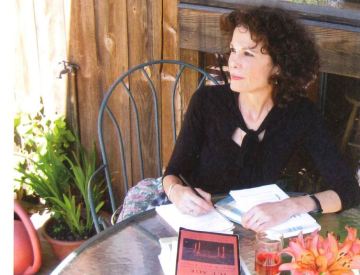
My husband, Bill Eichner, and I founded Alta Gracia, a farm/literacy project in the Dominican Republic, and we ran into some of those same issues when we wanted to do a school and a library in a community that had never had either one. But there were learning spaces and storytelling treasures in the community that could help a school and a library to flourish because they would have a connection to something that had already been identified and embraced as a need or as a tradition. That’s important-bringing the museum into the community via mutual transformation. Museums will be changed somewhat by the experience, and definitely Hispanic and Latino communities will be changed by the exposure.
I’m thinking about when I go on these book tours, and I see that I’m going to be in a Latino community, and it says, “Reading, 7 to 8; signing, 8 to 8:30.” And I think, these people do not know how we Latinos do a signing. I mean, there’s visiting, pictures taken with the kids who are reading your book, talking about mutual acquaintances or something coming up. The signing is usually the large part of the event, not the prescribed reading because that’s how our communities have shared stories, traditionally, in the middle of the big gathering, not with a speaker in front giving a lecture.
You talk in Once Upon A Quinceanera about keeping traditions alive. Are there enough museums in the United States that serve the same function for Spanish-speaking communities?
Well, you’re talking to someone who isn’t in that field, which is part of the reason, when I was invited to give the keynote, I said to them, “But I’m a storyteller. I’m not a museum specialist.” And they said, “Well, we want somebody from the outside to come and talk about museums from their point of view.” So I wouldn’t know enough about what I’m sure are many wonderful projects out there. Maybe the key is tapping the population that can enjoy them, that knows they’re there because, without that, the museum remains like a book that hasn’t been picked off the shelf to be read.
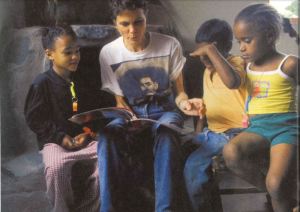
Also, a museum doesn’t have to be about Latino stuff to be our museum or about a specific ethnic group. I can read a Russian novel and still find myself in it because it’s a story about being a human being. So I think any museum that is inventive, lively, accessible, with sensitive ways of communicating their stories is going to attract people from all the different tribes that live in the United States and in the world. A wonderful thing would be to involve the community, not just as consumers of museums but as volunteers who help keep the museum going.
Is there anything you’d like to add about how museums have affected you?
I can identify two or three times when museums really opened up for me-went from being things I was slightly afraid of to places that became dazzlingly alive for me. Now I think of them as a real treasure. In preparation for going to L.A. and giving a talk, I visited one of our most wonderful institutions in the Dominican Republic. It’s called Centro Leon, and it’s an amazing cultural center with a museum at its heart. And I just did a program for them with 250 kids from the barrios and orphanages, and I was amazed because here we were in the heart of a museum, and most of those kids had never been in a museum before. And they’re coming in there and having access to it and enjoying themselves. I just felt like, “Wow, maybe I’m meant to go to L.A. I’ve connected 250 little beings with the idea of a museum.” It’s one of very few museums in our country.
Even after they’d been married and had their own families and often couldn’t make it for other occasions, the four daughters always came home for their father’s birthday. They would gather together, without husbands, would-be husbands, or bring-home work. For this too was part of the tradition: the daughters came home alone. The apartment was too small for everyone, the father argued. Surely their husbands could spare them for one overnight?
The husbands would just as soon have not gone to their in-laws, but they felt annoyed at the father’s strutting. “When’s he going to realize you’ve grown up? You sleep with us!”
“He’s almost seventy, for God’s sake!” the daughters said, defending the father. They were passionate women, but their devotions were like roots; they were sunk into the past towards the old man.
Is that tradition changing at all?
Oh, definitely. For one thing, museums are changing for everyone around the world, because if you have access to the Internet, you can visit a museum even if you can’t afford to travel to where the physical museum is located. One of the things about this global culture is that even if you’re from a poor country that can’t afford having many museums, the whole world can become your museum.
Besides doing the program at Centro Leon, I went the next day and visited with the people who do all the educational programs there, and I thought, “Oh, my God, I wish I had had access to this when I was a kid.” You know, it’s amazing what they’re doing, and how they’re connecting with the community.
For instance, in the Dominican Republic, especially in Santiago, when Christmas comes, neighborhoods go crazy each one trying to outdo the other with the most inventive, outrageous, gorgeous decorations. The barrios are poor and can’t afford fancy, store-bought Christmas ornaments, so they have to be inventive, using recycled stuff like cans, or things from the countryside, whatever they can find. So Centro Leon held a contest to highlight and celebrate this popular folk-and some would consider kitsch-art form: Mi Barrio en Navidad, or My Neighborhood at Christmas. The best-decorated neighborhood would be the winner. In anticipation, Centro Leon held workshops on how to make certain traditional ornaments and hosted talks about the background of certain practices around the holidays. People who never go to a museum were suddenly learning about their own history and participating actively in its creation. When the winner was announced, the museum opened up the grounds for an enormous block party.
They kept saying they wanted people to come to the museum, though it might feel forbidding. But it’s sitting right smack in the center of all these neighborhoods. They wanted to open it up and say, “This is yours, too.” And focusing on something that wouldn’t normally be considered traditional cultural artifacts-these crazy neighborhood decorations. I thought that was so cool.
One thing that really has mattered a lot to me is making access easy and affordable. Over 25 years ago, before the Phillips Collection in D.C. got its new wing, I made a daily visit there to one painting at a moment in my life when I really needed it. And they just had a suggested donation box, and I was earning, I don’t know, $19,ooo a year, and I had to live in a city with expensive rent. But I could go in and just put in 75 cents or a dollar, and this was every day. I know museums are hurting and have to be supported by the community, but they need to find inventive ways of attracting young people so they make it their museum.
Centro Leon does have an entry fee. And I said, “Oh, boy, that’s going to make it hard.” But they have a day when you can go for free, and, of course, kids and students can find ways of getting special passes. So that’s good to hear.
The Phillips Collection, by the way, is one of my favorite museums. The structure is inviting, because it used to be a house. It wasn’t a building that felt scary, but a place where I could feel at home.



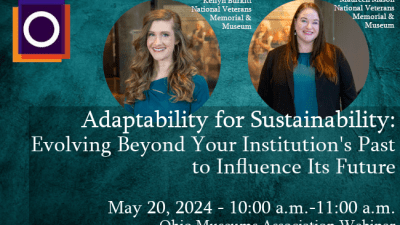
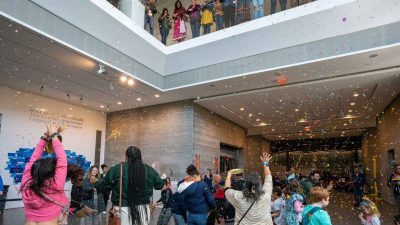
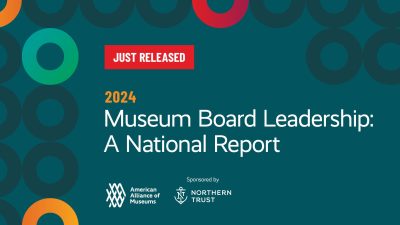
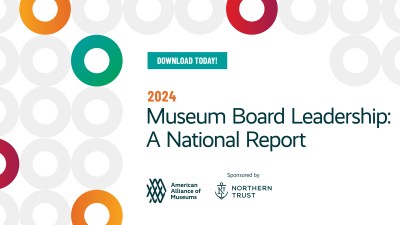

Comments